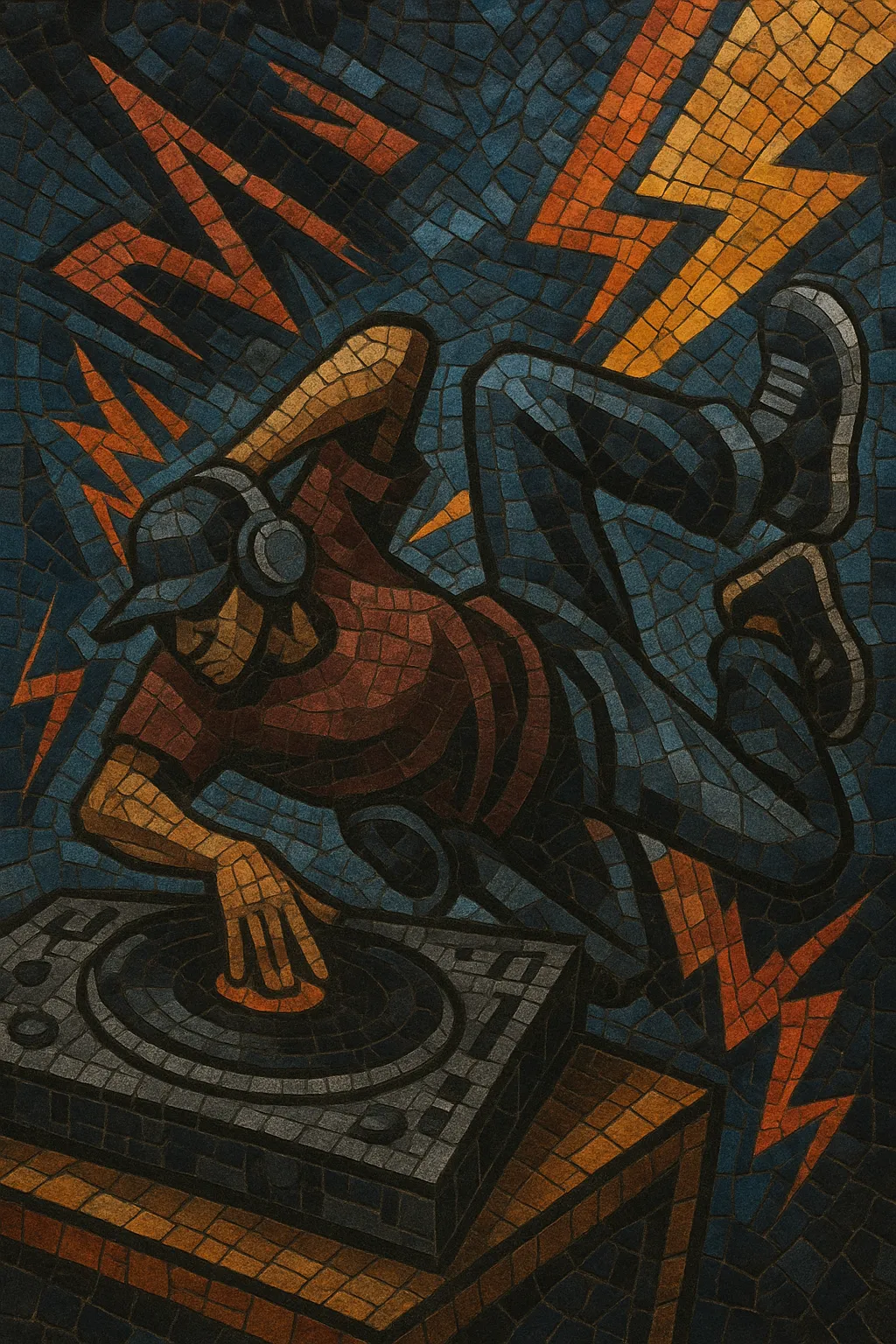Breaks (short for breakbeat) is a dance-music style built around syncopated drum breaks rather than a straight four-on-the-floor kick. Typical tempos range from about 125–140 BPM, with swung or shuffled patterns that emphasize the off-beat and the classic break loops heard in early hip hop and funk.
The style draws from funk drum breaks, electro and Miami bass drum-machine programming, and the sampling aesthetics of hip hop and UK rave culture. It favors heavy, punchy kicks and snares, rolling percussion, elastic sub-bass (often 808-based or Reese-style), choppy edits, and DJ-friendly arrangements with big drops and builds. Variants include UK “nu skool” breaks and the more bass-led Florida breaks.
Breaks is club-focused, kinetic, and head-nodding, occupying a space between electro, big beat, and drum and bass—groovy enough to keep a dancefloor moving, but syncopated enough to feel rugged and funky.
The foundation of breaks lies in the funk and soul drum breaks popularized by DJs and early hip hop pioneers who extended the percussive "break" sections of records. Electro and Miami bass in the 1980s added drum-machine precision, sub-bass weight, and a dancefloor focus that would later feed directly into breakbeat-based club music.
As UK rave culture exploded, producers began building entire tracks around sampled breaks, pushing the sound toward harder and faster territories (breakbeat hardcore and jungle). Parallel to this, a more mid-tempo, groove-led approach coalesced—what club culture would shorthand as "breaks"—keeping hip hop’s swing while embracing rave energy and DJ functionality.
Labels and artists in the UK and US refined the sound: tight 130-ish BPM rhythms, thick sub-bass, and highly produced drum edits. The "nu skool" movement (alongside Florida breaks) brought chart presence, festival slots, and a global scene, with DJs championing exclusive dubs and razor-edited break loops.
Although the mainstream wave cooled, breaks’ DNA persisted across bass music, UK club hybrids, and techno/house sets that reintroduced breakbeat rhythms. Producers continue to fuse classic funk breaks with modern sound design, while new scenes surf a cyclical resurgence of break-heavy club tracks.


